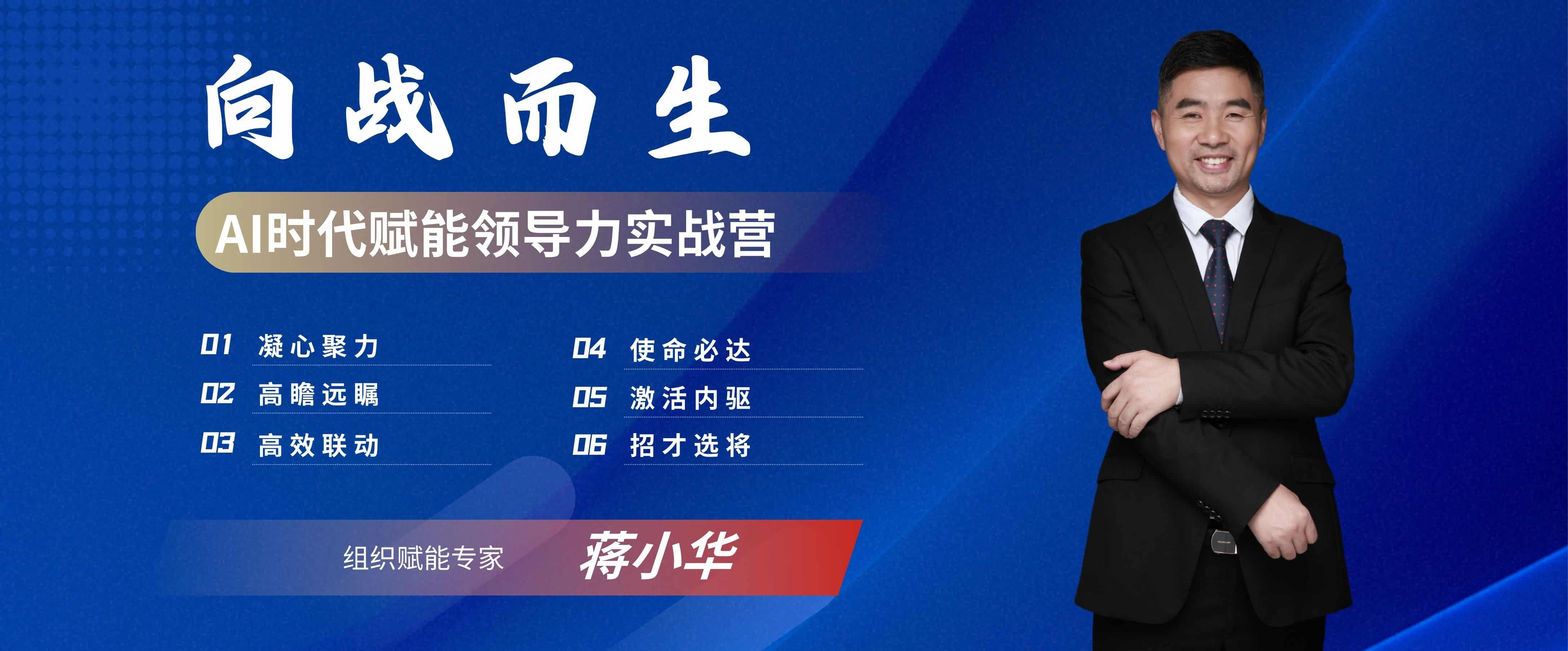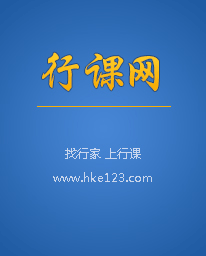- 失效模式影响和分析FMEA实战王牌训
- SPC/MSA/FMEA/APQP/
- ISO/TS16969五大工具之-F
- 产品风险管理与FMEA实战-保证产品
- Mentor技巧培训:如何做好企业内
- FMEA&APQP&PPAP(潜在失
- FMEA/SPC/MSA预防工具三剑
- 产品风险管理与FMEA实战—保证产品
- 插花【Flower Arrangem
- EHS培训—当好EHS主管-Dail
- 物业服务“亮点”策划与实施
- 银行信用卡营销项目的策划与实施管理培
- 6S活动的推进重点和实施步骤
- 商超零售营销管理_促销活动的精心策划
- 中国企业文化理念提炼与实施的流程及方
- 上海市工伤保险实施办法亮点解读
- 房地产广告与营销活动策划与实施
- 绩效管理如何为企业带来竞争优势及薪酬
- 门店业绩突破利器-促销活动策划与实施
- 企业组织发展的成功实施:思想,流程,
Meet the Three-pillar Model HR三支柱的规划与实施
课程编号:47290
课程价格:¥0/天
课程时长:2 天
课程人气:420
- 课程说明
- 讲师介绍
- 选择同类课
成熟企业的中高层经理、创业公司的创始团队
【培训收益】
1.系统知识:学习该课程,学员能全面了解人力资源三支柱的各个部分,以及各部分之间的相互作用。 2.关键技能:学习该课程,学员能迅速掌握人力资源三支柱的规划过程,以及三支柱模式的实施要点。
第一章 演化过程:三支柱模式的演化过程
本章的课前思考问题:人力资源部门,是战略部门,还是服务部门?
一 阶段:人力资源管理的四个阶段
1.职能阶段:专业事务导向,提高效率 1960s以前
2.资源阶段:资源价值导向,发现价值 60s到80s
3.战略阶段:核心优势导向,构建优势 80s到00s
4.支柱阶段:业务支持导向,快速响应 00s以后
二 分析:人力资源工作的类型分析
1.专家型、战略型的工作:例如制定方针、标准,占10%
2.伙伴型、支持型的工作:例如分析流程、绩效,占30%
3.服务型、操作型的工作:例如工资发放、考勤,占60%
学术背景讲解:拉姆·查兰和戴维·尤里奇的观点分歧
三 逻辑:三支柱模式的逻辑
1.拆分:把HR活动拆分为专家型、伙伴型、服务型
2.重组:把HR活动重组为COE、BP、SSC
本章的教学目标:让学员了解三支柱模式的背景及逻辑。
Chapter 1 Overview, understanding human resource strategy
Pre-training question of this chapter: Why do hi-tech companies prefer the three-pillar model?
1.The four stages of human resource management
a)Personnel management, efficiency directed
b)Resource management, value directed
c)Strategy management, advantage directed
d)Three-pillar, business directed
2.Analysis: Analysis of the types of human resource work
a)Strategy and expert work: accounting for 10%
b)Coaching and Supportive work: accounting for 30%
c)Operational and service work: accounting for 60%
Background explanation: debate between Ram Charan and Dave Ulrich
3.Logic: logic of the three-pillar model
a)Breakdown: breakdown HR’s work
b)Reorganization: reorganize HR activities into SSC, BP, COE
Benefits from this chapter: advantages and challenges of the three-pillar model.
第二章 协作方式:三支柱模式的分工协作
本章的课前思考问题:人力资源部和其他部门是什么关系?
一 专家中心(COE)的活动
1.战略解读:识别战略目标中的人力资源事务
2.专业指导:提出人力资源事务的原则和标准
3.需求响应:响应业务伙伴和共享中心的需求
二 业务伙伴(BP)的活动
1.业务解读:识别业务目标中的人力资源事务
2.业务支持:提出人力资源事务的方案和步骤
3.需求响应:响应业务部门对人力资源的需求
三 共享中心(SSC)的活动
1.服务规范:共性人力资源服务的标准化
2.操作实施:人力资源方案的具体实施
3.需求响应:响应员工对标准服务的需求
小组练习1:模拟,怎样实现部分培训外包
本章的教学目标:让学员理解三支柱的分工协作。
Chapter 2 Efficiency, building hard power of execution
Pre-training question of this chapter: What is the relationship between HR department and other departments?
1.Activities of the Center of Experts (COE)
a)Decoding: Identifying HR issues in strategic goals
b)Directing: Setting the principles and standards of HR affairs
c)Responding: responding to the needs of BP and SSC
2.Activities of Business Partners (BP)
a)Interpreting: Identifying HR issues in business goals
b)Supporting: proposing plans and steps for HR affairs
c)Responding: responding to the needs of business departments
3.Activities of Sharing Center (SSC)
d)Specification: standardization of common HR services
e)Implementation: the implementation of HR program
f)Responding: responding to employees' demand for standard services
Group exercise 1: Roleplay, how to outsource basic training
Benefits from this chapter: Understanding the roles of three pillars and their collaboration.
第三章 特征分析:三支柱模式的特征分析
本章的课前思考问题:相比职能模式工,三支柱模式有什么特点?
一 优势:三支柱模式的优势
1.方向准:始终以业务为中心,人力资源职能的方向准确
2.人效高:基础和尖端的服务外包,减少人员、提高人效
3.响应快:人力资源深入一线业务部门,和业务需求同步
二 机遇:三支柱模式的机遇
1.开放性:可以广泛接触外界,能拓宽人员的视野
2.适应性:职能可以项目化执行,提高环境适应性
3.多元性:可以多项目同时执行,提高内部多元性
案例讲解:索尼、腾讯、阿里,三支柱模式的共同点与差异
三 挑战:三支柱模式的挑战
1.数字化:没有数字化基础,能不能实行三支柱
2.领导力:业务领导,如何做出人力资源的决策
3.专业性:内部专家,如何跳出企业的知识局限
小组练习2:模拟,如何建立外部专家团队
本章的教学目标:让学员了解三支柱模式的特征
Chapter 3 Analyzing: Characteristics of the Three Pillar Model
Pre-training question of this chapter: What is the relationship between HR department and other departments?
1.Advantages: the advantages of the three-pillar model
a)Accurate direction: focusing on the business
b)High person efficiency: improving person efficiency by outsourcing
c)Quick response: keeping pace with business needs
2.Opportunities: Opportunities in the three-pillar model
a)Openness: extensive contact with the outside world
b)Adaptability: functions can be implemented as projects
c)Diversity: multiple projects can be executed at the same
Case study: Sony, Tencent, Alibaba, the commons and differences
3.Three challenges: the challenge of the three-pillar model
a)Digitalization: the three-pillar model need a digital foundation
b)Leadership: business leaders should develop HR sense
c)Professionalism: experts shall go beyond knowledge limitations
Group exercise 2: Roleplay, how to build an external expert team
Benefits from this chapter: understanding the characteristics of the three-pillar model.
第四章 专家中心:专家中心的职能与机制
本章的课前思考问题:什么样的HR可以成为专家?
一 专家中心的职能
1.规划战略:围绕公司战略,规划人力资源战略
2.提出标准:针对最佳实践,提出人力资源标准
3.制定制度:针对管理目标,制定人力资源制度
二 专家中心的运行机制
1.常态化:以战略导向为中心,形成研讨小组
2.专业化:以职能板块为中心,形成专业小组
3.项目化:以解决问题为目的,形成项目小组
案例讲解:处在多个项目组中的专家
三 专家中心的日常工作
1.主动型:优化标准、优化实践
2.响应型:响应战略、响应需求
3.发展型:赋能组织、赋能团队
案例讲解:领导力中心的常态任务与项目任务
小组练习3:讨论,怎样解读战略的关联性
本章教学目标:让学员理解专家中心的运行机制。
Chapter 4 Designing: Mechanism and Function of Expert Center
Pre-training questions of this chapter: What kind of HR can become an expert?
1.Functions of the Expert Center
a)Planning strategy: planning HR strategy around company strategy
b)Proposing standards: Proposing HR standards for best practices
c)Setting regulation: setting HR regulations for management goals
2.The operating mechanism of the expert center
a)Normalization: to form a seminar group focusing on strategy
b)Specialization: to form a professional group for upgrading
c)Projectization: to form a project team for problem-solving
Case study: experts in multiple project teams
3.Daily work of the expert center
a)Proactive: optimizing standards and optimizing practices
b)Responsive: responding to strategy and demand
c)Progressive: empowering organization, empowering team
Case study: normal and project tasks of the leadership center
Group exercise 3: Discussion, how to identify strategy correlation
Benefits from this chapter: understanding the operating mechanism of the expert center.
第五章 业务伙伴:业务伙伴的职能和技能
本章的课前思考问题:业务团队需要什么样的人力资源支持?
一 业务伙伴的职能
1.流程梳理:发现业务的流程缺陷
2.绩效分析:定位岗位的绩效障碍
3.动作分析:提取作业的最佳实践
二 业务伙伴的知识背景
1.作业管理:动作和时间分析
2.岗位管理:团队化工作设计
3.项目管理:优化流程的要素
案例讲解:业务团队欢迎的业务伙伴
三 业务伙伴的关键技能
1.激励:发现优势、唤醒激情
2.辅导:指导行为、提高技巧
3.沟通:获得信任、凝聚团队
案例讲解:业务伙伴的硬技能与软技能
小组练习4:演练,怎样梳理项目流程因素
本章教学目标:让学员理解业务伙伴的工作模式。
Chapter 5 Discovering: Functions of Business Partners
Pre-training questions of this chapter: What kind of HR support does the business department need?
1.Functions of business partners
a)Process analysis: locking the defects of business process
b)Performance analysis: positioning the performance barriers
c)Procedure analysis: finding out the standard procedure
2.Knowledge background of business partners
a)Task management: motion/time study
b)Post management: team work design
c)Project management: optimizing process elements
Case study: business partners welcomed by the business team
3.Key skills of business partners
a)Motivation: discovering advantages and awakening passion
b)Consultation: guiding behavior and building skills
c)Communication: gaining trust and uniting the team
Case study: hard and soft skills of business partners
Group exercise 4: Roleplay, how to analyze process factors
Benefits from this chapter: understanding the working mode of business partners.
第六章 服务中心:服务中心的输入和交付
本章的课前思考问题:哪些人力资源事务可以在线上完成?
一 服务中心的职能
1.数据:可以数据化的HR事务,如考勤记录、差旅报销
2.标准:可以标准化的HR活动,如在线测评、知识管理
3.规范:可以规范化的HR职能,如校园招聘、新人培训
二 服务中心的结构
1.员工自助中心:功能化应用程序,如资料上传
2.员工呼叫中心:一对一线上应答,如手续咨询
3.事务处理中心:面对面事务处理,如离职面谈
4.数据分析中心:后台数据的分析,如人均产出
5.运营管理中心:内部的管理支持,如采购管理
6.运营维护中心:服务中心的维护,如网络管理
7.运营执行中心:具体的活动执行,如培训组织
案例分析:服务中心的建设起点
小组练习5:讨论,怎样确定服务体验标准
本章教学目标:让学员理解服务中心的工作模式。
Chapter 6 Delivering: Input and Delivery of Service Center
Pre-training questions of this chapter: Which HR affairs can be done online?
1.Functions of the service center
a)Data: HR affairs that can be digitized
b)Standard: HR activities that can be standardized
c)Specification: HR functions that can be specified
2.Structure of the service center
a)Employee self-help center
b)Employee call center
c)Transaction processing center
d)Data analysis center
e)Operation management center
f)Operation and maintenance center
g)Activity execution center
Case study: the starting point of service center construction
Group exercise 5: Discussion, how to set the experience standard
Benefits from this chapter: understanding the function layout of the service center.
第七章 导入步骤:三支柱模式的导入步骤
本章的课前思考问题:传统的企业导入三支柱模式,应该从哪些开始?
一 导入三支柱模式的三种路径
1.从服务中心入手:信息和活动的标准化
2.从业务伙伴入手:支持和赋能的常态化
3.从专家中心入手:战略和系统的细节化
案例分析:京东的三支柱模式
二 模式导入的前期准备
1.明确目标:描述目标的预期形态
2.组建团队:组建实施的核心团队
3.规划路径:规划达成目标的路径
4.单点突破:选择推进的最初起点
三 模式导入的实施步骤
1.服务中心:数字化、标准化、手册化
2.业务伙伴:人才引进、强化培养、岗位培训
3.专家中心:项目外包、引入外脑、内部迭代
小组练习6:演练,怎样明确业务伙伴的角色
本章教学目标:让学员掌握三支柱模式的导入步骤。
Chapter 7 Adopting: Stages of adopting the three-pillar model
Pre-training questions of this chapter: Where should traditional companies start to adopt the three-pillar model?
1.Three ways to adopt the three-pillar model
a)Start from SSC: standardization of information and activities
b)Start from BP: normalization of support and empowerment
c)Start from COE: decomposition of strategy and system
Case study: JD’s three-pillar model
2.Preparations for adapting three-pillar model
a)Clarify the goal: describe the expected shape of the goal
b)Team building: build a core team for implementation
c)Planning the path: planning the path to achieve the goal
d)Single point breakthrough: choose the initial starting point
3.Three implementation steps of three-pillar model adapting
a)Service center: digitizing, standardization, textualization
b)Business partners: talent searching, on-the-job training
c)Expert center: outsourcing, external brain, internal iteration
Group exercise 6: Roleplay, clarifying the roles of business partners
Benefits from this chapter: understanding the adoption steps of the three-pillar model.
第八章 运行要点:三支柱模式的运行要点
本章的课前思考问题:在三支柱模式下,HR的职业生涯会有什么变化?
一 问题:采用三支柱模式前,要回答的问题
1.内部优化:通过三支柱模式,要获得哪些内部优化
2.竞争优势:通过三支柱模式,要获得什么竞争优势
3.员工价值:通过三支柱模式,员工能获得哪些价值
二 选择:三支柱模式面临的选择
1.服务中心,是主体自建,还是主体外包
2.业务伙伴,是业务背景,还是HR背景
3.专家中心,是实体中心,还是项目中心
三 保障:三支柱模式下的职能保障
1.人才梯队:如何建立三支柱模式下的人才梯队
2.生涯发展:如何规划三支柱模式下的生涯发展
3.战略独立:如何保证三支柱模式下的HR战略
小组练习7:演练,怎样规划人员的生涯发展
本章教学目标:让学员掌握三支柱模式的运行要点。
Chapter 8 Focusing: Knowhow of the three-pillar model
Pre-training questions of this chapter: Under the three-pillar model, what changes will HR's career have?
1.Questions to be answered before adopting the three-pillar model
a)Internal optimization: what internal optimizations should be obtained
b)Competitive advantage: what competitive advantage should be obtained
c)Employee value: what employees’ value should be obtained
2.Choices faced by the three-pillar model
a)SSC, is outsourced or self-developed
b)BP, is it business background or HR background
c)COE, is it a physical center or a project center
3.Functional guarantees under the three-pillar model
a)Backup system: how to establish the talent backup system
b)Career development: how to plan career development
c)Strategic independence: how to ensure the HR strategy
Group exercise 7: Discussion, how to plan the career development
Benefits from this chapter: understanding the knowhow of the three-pillar model.
【资质背景】
组织学专家、管理学者
CCTV2年度雇主调查评审专家
清华大学继续教育学院课程讲师
清华大学职业经理训练中心高管教练
【自我解读】
刘向明老师曾服务于:沃尔玛商业咨询公司,担任咨询经理;阿尔斯通华能事业部,担任HRD;梅塞尔南中国区,担任总裁助理;中华英才网,担任董事会顾问;比特营科技公司,担任CEO。
【授课特色】
讲授HR及领导力公开课,听众超过十万人次,内训超过100场/年,并为江中集团.华润.民生银行等提供咨询服务。内容由浅入深,对专业知识的讲解不是枯燥的说教,而是通过非常有趣的事例或者借鉴我们耳熟能详的任务讲解出来,在寓教于乐中就帮知识了解了,非常精彩。
【主讲课程】
《人力资源战略的规划与实施》
《HR三支柱的规划与实施》
《组织发展的六个步骤》
《招聘甄选技巧》
《培训体系建设》
《战略人力资源管理》
《员工压力管理》
《心理学在人力资源管理中的应用》
《非HR经理的HR管理》
《构建创新型组织的五个步骤》
《管理心理学:心理学在企业管理中的应用》
【服务客户】
京东、小米、百度、网易、58同城、搜狐、居然之家、中科院人工智能研究所、中国建设研究院、公安部交管研究所、万科地产、中建地产、融创集团、富力地产、建发地产、建设银行、民生银行、国家开发银行、北京银行、友利银行、郑州商品交易所、大连商品交易所、上海证券交易所、中船重工、中航工业、中铁集团、北方工业、上汽集团、国航航空、海南航空、华住集团、华谊娱乐、湖南卫视、IBM、辉瑞制药、德意志银行、卡特彼勒、雀巢集团、三星集团、SK海力士、LG、松下、索尼、台积电等。
-
第一天:第一单元:不懂阿米巴经营,老板疲于奔命1、传统管理方式在国内的水土不服2、阿米巴经营的精髓和巨大威力(员工的老板梦)3、阿米巴经营与中华文化的天然合一4、流程管理与绩效管理之:尴尬与隐痛5、阿米巴经营运作系统的解读第二单元:经营哲学为企业经营赋予灵魂1、没有经营哲学,企业就没有灵魂 ..
-
第一讲:质理管理基础知识1. 正确的认识质量 2. 质量管理的理念 3. 质量管理的过去与现在 4. 质量与产量5. 质量管理中的“ 三不”政策 6. 质量成本管理 7.现阶段质量管理六大误区互动:请问你的问题在那里案例分析:报废的飞利浦音响故事:雨刮器坏了之后第二讲:完善的..
-
开篇话题 一、什么是企业经营?- 1个目标、2个任务 二、一流业绩的秘诀 - 4个层面的卓越和协调 三、企业失败动力学 - 为什么好公司走向失败? 第一部分:远景目标-如何树立远大追求? 一、有追求才有卓越 - 审视你的经营哲学 二、不能虚幻的未来 - 远景目标的关键要素 三、合理且有挑战性 - 远景目标制定4维法 第二部..
-
开篇话题 一、什么是企业经营?- 1个目标、2个任务 二、一流业绩的秘诀 - 4个层面的卓越和协调 三、企业失败动力学 - 为什么好公司走向失败? 第一部分:远景目标-如何树立远大追求? 一、有追求才有卓越 - 审视你的经营哲学 二、不能虚幻的未来 - 远景目标的关键要素 三、合理且有挑战性 - 远景目标制定4维法 第..
-
一、 房地产策划概述 1、 房地产策划作用与意义 2、 房地产策划组成部分 3、 不同房地产项目策划差异 4、 房地产策划的核心理念二、 房地产广告策划与实施 1、 房地产项目核心竞争力的提炼与策划 2、 目标客户群体定位与需求提炼 3、 房地产广告主题策划 4、 广告文案策划 5、 各类平面广告策划 6、 楼书策..
-
培训形式: 讲师讲授+体验式训练+互动分享+工具应用。 *培训形式多样化是保证培训效果的重要手段。课程大纲: 第一章 金牌导购的金牌特质 一、普通导购“病”态表现 1、不种因缘,不打基础 2、倚重价格,低价安心 3、急于成交,没有耐心 4、随心所欲,不求改变 5、懒惰致命,总有借口 ..









